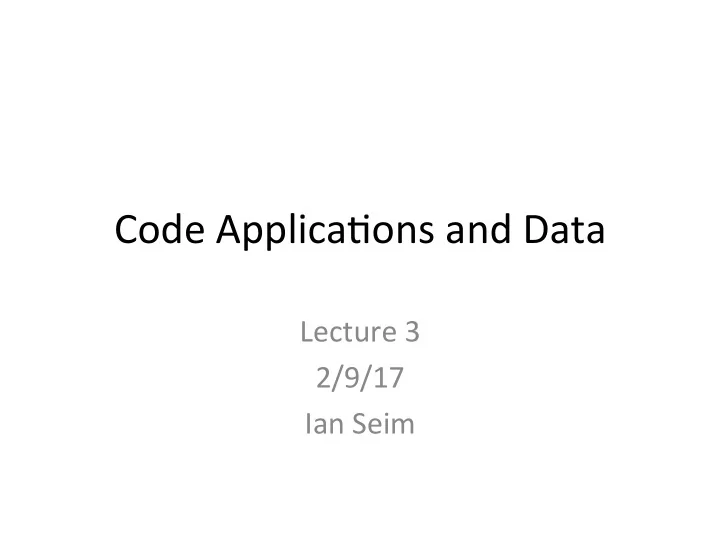

Code Applica,ons and Data Lecture 3 2/9/17 Ian Seim
fBmMLE.m: input • First input is an Nx2 matrix of x and y posi,ons • Second input is dt (aka the shortest lag ,me) • Third input is dt – This is an easy way for the code to assume a linear driN
fBmMLE.m: output • [mle, ci] • “mle.Sigma” is a 2x2 matrix. To transform to D, do: (Sigma(1,1) + Sigma(2,2))/4 – Sigma here is actually sigma squared, where D = .5*sigma^2 • “mle.Beta” are the driN parameters in each coordinate • “mle.alpha” is alpha
“other analy,cs” • brownianMLE.m – finds MLE of D and driN params, mu, for brownian paths • path_MSD.m – computes MSD for a single path at op,mal lag ,mes • fBmXY_HD.m – simulates fBm paths (can be used to simulate brownian paths as well) • ellipse.m – calculates confidence ellipses (for (D,α) distribu,ons) using principal components • dimless.m – non-dimensionalizes D • Moduli.m – tranforms MSD into the viscous and elas,c moduli by the generalized Stokes-Einstein rela,on (Mason-Weitz 1996) – spline_der.m – used for spline interpola,on of the MSD in Moduli.m
path_MSD.m • [msd, lags] = path_MSD(data, frame_rate) • To plot: plot(lags, msd) – set(gca, ‘xscale’, ‘log’); set(gca, ‘yscale’, ‘log’)
ellipse.m • To plot the output: plot(exp(e(1,:)), e(2,:)), since the ellipse is fijng data that has a semi- log scaling
dimless.m • Outputs a non-dimensionalized value for D (no units, like alpha), and requires as input: alpha, dimensional D (from mle fit) and bead diameter, which will be 1 for our experiments
Moduli.m: input • First argument is a 2xM matrix of MSD (top row) and the corresponding lag ,mes (second row) • Second argument is the number of points used in the spline interpola,on (use 200)
Moduli.m: output • First is G’ (elas,c modulus) • Second is G” (viscous modulus) • Third is omega (frequency) • When plojng, we need to convert omega to radians, so transform the frequency to -> 2*pi*omega
The Dataset • HBE mucus: Several different weight percents of cell culture mucus (the same used in the PLoS ONE paper). Mucus is heterogeneous. – Frame rate = 60 fps – Bead diameter = 1 micron – Try to recreate the following figure:
Papers • How MLE works: JOR Mellnik et al 2016 – hsps://arxiv.org/pdf/1509.03261.pdf • PLoS ONE HBE mucus: PLoS ONE Feb 2014 Hill et all – hsp://journals.plos.org/plosone/ar,cle? id=10.1371/journal.pone.0087681
Recommend
More recommend